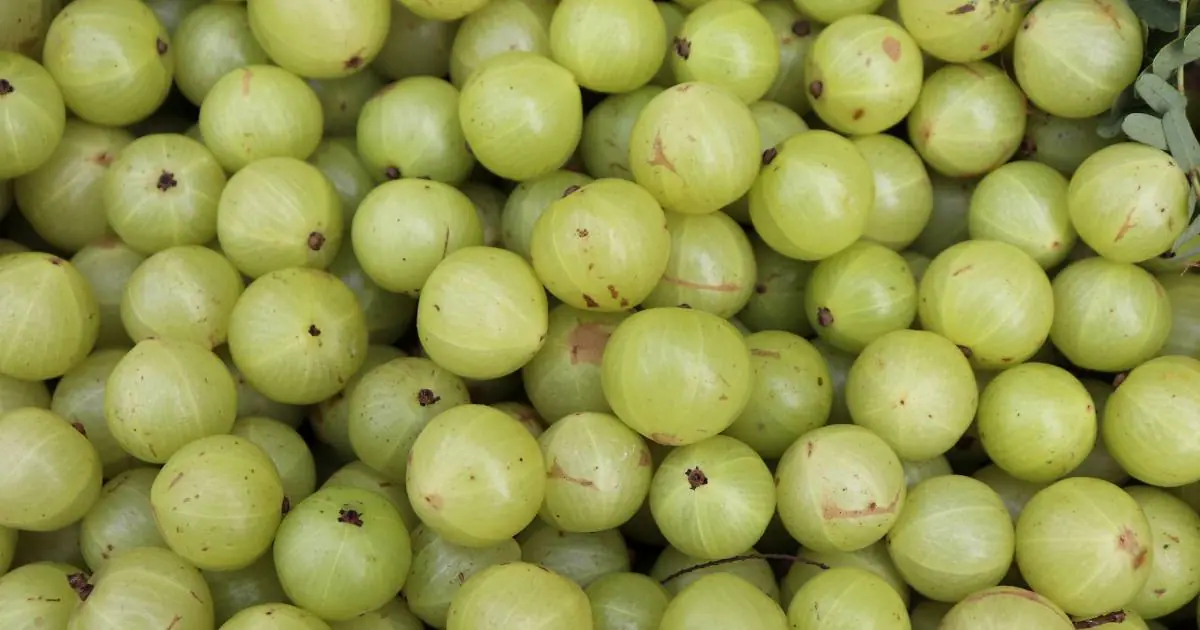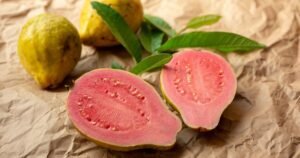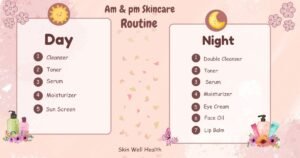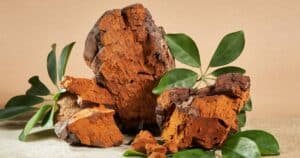Amla Oil for Skin: Top Benefits, Best DIY Remedies & More
Hey guys! Are you searching for a natural remedy for your skin that is called “amla oil”? So, you have come to the right place…… : )
In this blog post, you will find everything you need to know about amla oil and how you can include this ayurvedic remedy in your skin care routine.
What is Amla Oil?
Ayurvedic medicine has loved to use amla oil for hundreds of years. It comes from the fruit of the Emblica officinalis tree, which is the Indian gooseberry.
Amla oil is known for its antioxidant properties, being high in vitamin C (200–900 mg per 100 g of edible portion), amino acids, minerals and other nutritional qualities which provide a wide range of possible benefits for your skin.
Uses in History
In Ayurveda, amla is a very important “Rasayana,” or plant that heals. It has been used for thousands of years because experts know it can balance the body’s doshas (Vata, Pitta, and Kapha) and improve overall health.
For centuries, amla oil has been used to treat skin conditions, eye health, cancer, diabetes, liver problems, heart disease, ulcers, anemia, and other diseases.
Benefits of Amla Oil for Skin
Anti-Aging ― By increasing collagen production and deeply moisturizing the skin, amla oil helps reduce fine lines and wrinkles.
Its antioxidants fight the aging effects caused by free radicals on skin, making it tighter and looking younger.
Skin Brighter ― Because amla oil has a lot of vitamin C, it can make your skin brighter, lighter, and more better.
Its use can also lighten dark spots and hyperpigmentation, reduce the blemishes and give your skin more even tone.
Moisturizing ― If you have dry skin, then amla oil is a great option to say good bye to dryness.
Because it deeply hydrates the skin, locks moisture, keeps skin soft, and protects from dryness, flaky, and itchy skin.
Anti-Inflammatory ― Amla oil has anti-inflammatory powers that make it able to treat irritated conditions like:
- psoriasis
- rosacea
- eczema
It helps your wounds heal faster.
Acne-Fighter — If you have someone with a common skin issue called acne, then amla oil is a good choice to use. It has anti-bacterial and anti-fungal properties that help treat acne.
It is also a skin cleanser and keeps the skin safe from harmful bacteria.
How do I use amla oil for skincare?
Please keep in mind that every person’s skin is different. So, do a patch test before trying any of these uses. Also, use high quality amla oil for best results.
Direct use — Take a few drops of amla oil, then directly apply them to your face and massage with circular motions.
Leave it overnight to see the best results.
Face mask — Mix two table spoons of yogurt with 1 table spoon of amla oil and a pinch of turmeric. Yogurt is filled with lactic acid, which has bleaching effects.
It can remove dead cells from your face, as well as the appearance of dark spots and hyperpigmentation, giving you a brighter and younger look.
Apply the face mask to your face and leave it for 15-20 minutes to see magic.
Face serum — You can mix a few drops of amla oil with a carrier oil like almond or jojoba oil to make an anti-aging serum.
DIY remedies of Amla oil
There are some effective DIY remedies for amla oil that you can use.
Let me show you…….. 🙂
1. Amla Oil and Honey Face Mask
- Mix well 1 table spoon of amla oil and 2 table spoons of honey in a bowl.
- Apply the mask to your face and leave it on for 20–30 minutes.
- Then rinse it off gently.
Benefits — Honey will give you antibacterial power to fight acne. Also, enjoy hydrated and brightened skin with this mask.
2. Amla Oil and Aloe Vera Soothing Gel
- Mix well 1 table spoon of amla oil and 2 table spoons of fresh aloe vera gel.
- Now apply the gel on your face and rest it for 15-20 minutes.
- Then wash it with cool water.
Benefits — This gel will give your face deep hydration and soothe irritated skin.
3. Amla Oil and Rose Water Toner
- Take a spray bottle.
- Combine 1 table spoon of amla oil and 3 tea spoons of rose water in a spray bottle.
- Shake well before each use.
- Spray the toner onto your face or apply it with a cotton pad.
Benefits — This superb toner will refresh your face, tone the skin, and balance pH levels.
4. Amla Oil and Lemon Juice Spot Treatment
Take ingredients……
- Mix 1 tea spoon of amla oil and 1 tea spoon of lemon juice in a small bowl.
- Then apply the mixture on dark spots or acne scars using a cotton swab.
- Leave it on for 10–15 minutes.
- And then wash it off.
Benefits — This mixture will lighten your dark spots and reduce acne scars.
5. Amla Oil and Sandalwood Powder Anti-Aging Mask
Take ingredients……
- 1 tablespoon amla oil
- 1 tablespoon sandalwood powder
- 2 tablespoons rose water
Then…..
- Mix all the ingredients to make a smooth paste.
- Apply the mask to your face and neck.
- Leave it on for 20 minutes.
- Then rinse off with lukewarm water.
Benefits — This anti-aging mask will reduce your wrinkles and fine lines and make your skin firm and youthful.
6. Amla Oil and Green Tea Anti-Acne Mask
- Take 1 tablespoon amla oil and 1 tablespoon green tea (brewed and cooled).
- Mix amla oil with cooled green tea.
- Apply the mask on your face.
- After 20 minutes, wash it off.
Benefits — This anti-acne mask will reduce acne and inflammation, thanks to the antibacterial and antioxidant properties.
Amla Oil for Different Skin Types
Oily Skin — Amla oil doesn’t clog pores and can help maintain sebum production. If you have oily skin, don’t use too much to keep it from becoming too oily.
Dry Skin — Amla oil is great for dry skin because it deeply moisturizes. Apply it several times a week to keep your skin hydrated and healthy.
Sensitive Skin — Before applying the full application, do a patch test. Although amla oil is generally safe, it should be increased gently.
Combination Skin — Depending on your skin needs, use more on dry areas and less on oily areas.
Side effects of Amla oil
Although amla oil is generally safe, people with sensitive skin should be careful when using it. It may be best to dilute the oil or use it with a carrier oil.
Amla oil can be dark, and it can stain clothes and other fabrics. Be careful when you apply it, and give it some time to absorb.
Avoid getting Amla oil in your eyes; it can irritate them.
Benefits of Amla Oil for Hair
Don’t forget, it’s magic in the treatment of hair…. There are a lot of benefits to using amla oil for hair.
- Reduces hair loss
- Strengthens hair
- Maintain natural hair color
- Makes hair long
- Makes hair shiny
- Treats dandruff and scalp conditions
Amla Oil vs. Other Popular Oils
- Argan Oil — Both are high in antioxidants, but amla oil is better for brightening because it has a lot of vitamin C.
- Jojoba Oil — Both are light and moisturizing, but amla oil is better at hydrating and anti-aging because it increases collagen.
- Coconut Oil — Coconut oil may clog pores for some people, but amla oil may be better for acne-prone skin and is suitable for all skin types.
Final Thoughts
So, amla oil can be a great option to include in your skin care routine. It can also be beneficial for your hair.
Note that if you feel any irritation or side effects, stop using amla oil and consult a healthcare doctor.
If you have any questions about your skin care, don’t hesitate to comment below…..
Frequently asked questions
Q1. Is Too Much Amla Oil bad for your hair?
If you use too much amla oil, your skin might become too oily, which can clog pores and cause problems like dandruff or acne.
Q2. Can you apply Amla oil everyday?
Generally, using amla oil 2-3 times a week gives you the best benefits without the risk of overuse.
Thanks for reading……. : )
Sources
1. Therapeutic potential of Phyllanthus emblica (amla): the ayurvedic wonder
2. Functional and Nutraceutical Significance of Amla (Phyllanthus emblica L.): A Review
5. Phyllanthus emblica L. (amla) branch: A safe and effective ingredient against skin aging
6. Amla (Emblica officinalis Gaertn.) the Indian Indigenous Berry in Skin Care
7. Effects of amla extract and collagen peptide on UVB-induced photoaging in hairless mice
8. ROLES OF EMBLICA OFFICINALIS (AMLA) IN MEDICINE
9. Wound healing activity of topical application forms based on ayurveda
11. Phyllanthus emblica L . (amla) branch: A safe and effective ingredient against skin aging














